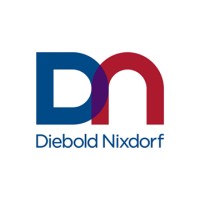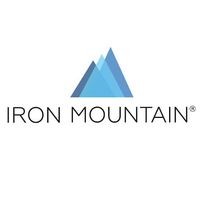
Diebold Nixdorf Company Cyber Security Posture
dieboldnixdorf.comWe automate, digitize and transform the way people bank and shop. We offer proven expertise and comprehensive portfolios in cutting-edge product technology, multi-vendor software and service excellence for financial and retail customers. Consumer behavior is changing rapidly; people are empowered and connected and expect unprecedented service and convenience. The world is “always on” – a digital era requiring us to orchestrate touchpoints in ways that meet and exceed the 24/7 automation needs of the banking and retail worlds. Diebold Nixdorf employs approximately 21,000 employees in more than 130 countries worldwide. We are publicly traded on the New York Stock Exchange under the symbol “DBD.” Specialties: financial and retail self-service solutions, services, security solutions, software, cash management, branch and store transformation
Diebold Nixdorf Company Details
diebold
19828 employees
311817.0
541
IT Services and IT Consulting
dieboldnixdorf.com
Scan still pending
DIE_1559874
In-progress
Between 900 and 1000
This score is AI-generated and less favored by cyber insurers, who prefer the TPRM score.
 Diebold Nixdorf Global Score
Diebold Nixdorf Global Score.png)

Diebold Nixdorf Company Scoring based on AI Models
| Model Name | Date | Description | Current Score Difference | Score |
|---|---|---|---|---|
| AVERAGE-Industry | 03-12-2025 | This score represents the average cybersecurity rating of companies already scanned within the same industry. It provides a benchmark to compare an individual company's security posture against its industry peers. | N/A | Between 900 and 1000 |
Diebold Nixdorf Company Cyber Security News & History
| Entity | Type | Severity | Impact | Seen | Url ID | Details | View |
|---|---|---|---|---|---|---|---|
| Diebold Nixdorf | Cyber Attack | 60 | 2 | 05/2020 | DIE84429723 | Link | |
Rankiteo Explanation : Attack limited on finance or reputationDescription: Diebold Nixdorf admitted a cyber attack on a service provider in a letter to customers, this provided optimization data for cash distribution to the ATMs. It is uncertain who was responsible for the attack on servers and other components at the data center utilized by the service provider Planfocus. Aside from not being impacted, neither customer data nor statistics data have been lost as of this writing, as far as is known. A service provider's data center, which houses the CCO systems, was the target of the attack. Only the attack, not the cash supply itself, could have put the optimization in jeopardy. | |||||||
| Diebold Nixdorf | Ransomware | 85 | 3 | 05/2020 | DIE2035291222 | Link | |
Rankiteo Explanation : Attack with significant impact with internal employee data leaksDescription: Diebold Nixdorf, a major provider of automatic teller machines (ATMs) and payment technology to banks and retailers, suffered a ransomware attack that disrupted some operations. ATMs or customer networks remained unaffected but the intrusion affected its corporate network. The investigation determined that the intruders installed the ProLock ransomware. | |||||||
| Diebold Nixdorf | Vulnerability | 100 | 5 | 8/2024 | DIE000081024 | Link | |
Rankiteo Explanation : Attack threatening the organization’s existenceDescription: Independent researcher Matt Burch disclosed vulnerabilities in Diebold Nixdorf's ATM security solution, Vynamic Security Suite (VSS), during the Defcon security conference. The findings showed potential for attackers to circumvent hard drive encryption and gain full control over the machines if the patches are not applied, posing significant risks of financial data breach and unauthorized cash withdrawals. The unencrypted Linux partition used in the dual-boot configuration of the ATMs exacerbated the issue, allowing the exploitation path. Although Diebold has patched the issues, Burch suggested that patches might not be consistently deployed across all ATMs. | |||||||
Diebold Nixdorf Company Subsidiaries

We automate, digitize and transform the way people bank and shop. We offer proven expertise and comprehensive portfolios in cutting-edge product technology, multi-vendor software and service excellence for financial and retail customers. Consumer behavior is changing rapidly; people are empowered and connected and expect unprecedented service and convenience. The world is “always on” – a digital era requiring us to orchestrate touchpoints in ways that meet and exceed the 24/7 automation needs of the banking and retail worlds. Diebold Nixdorf employs approximately 21,000 employees in more than 130 countries worldwide. We are publicly traded on the New York Stock Exchange under the symbol “DBD.” Specialties: financial and retail self-service solutions, services, security solutions, software, cash management, branch and store transformation
Access Data Using Our API

Get company history
.png)
Diebold Nixdorf Cyber Security News
2020 review: Top five cyberattacks this year
The Financial Conduct Authority (FCA) admitted to a data breach after victims of the collapsed savings firm London Capital & Finance (LCF) were sent messages by ...
How Banks Are Strengthening Cybersecurity in the Digital Age
The banking sector is facing unprecedented cybersecurity challenges. As financial institutions increasingly digitize their services to meet ...
Banks must modernize or fall behind
Banks must modernize or fall behind. In an era where digital innovation is paramount and cybersecurity threats are more prominent than ever, ...
Diebold Nixdorf hires Joe Myers as executive vice president
Paytech heavyweight Diebold Nixdorf has appointed Joe Myers as executive vice president, reporting directly to CEO Octavio Marquez. Myers, who has more than 20 ...
Diebold Nixdorf contains cyber security attack
Diebold Nixdorf acknowledged a ransomware attack on its corporate computer network in April that never accessed its ATM or customer networks.
Fraud and Cybersecurity in Banking: Analyzing Trends, Breach Statistics, and Preventative Strategies
These tools enable financial institutions to analyze vast datasets rapidly, thereby identifying patterns and anomalies indicative of potential ...
Deutsche Post in branch refresh with Diebold Nixdorf
Founded in 1859, Diebold Nixdorf, which employs 21,000 employees and started as a safe manufacturer, offers a range of banking, payments, and ...
Ransomware Hit ATM Giant Diebold Nixdorf
Diebold Nixdorf, a major provider of automatic teller machines (ATMs) and payment technology to banks and retailers, recently suffered a ...
Diebold Nixdorf's Q1 2025: Unraveling Contradictions in Cash Flow, Backlog, and Market Dynamics
- Diebold Nixdorf generated $6 million in positive free cash flow in Q1, the best first quarter performance in the company's history. - This ...

Diebold Nixdorf Similar Companies

Apex Systems
Apex Systems is a leading global technology services firm that incorporates industry insights and experience to deliver solutions that fulfill our clients’ digital visions. We offer a continuum of services, specializing in strategy, transformation, and managed services across application development

Coxabengoa
Coxabengoa is a vertically integrated global utility in water and energy at the forefront of solving the greatest global challenges of the green transition by applying technologically innovative solutions with a presence in 30 countries. Global leaders in the conservation and efficient management o

Zebra Technologies
Zebra (NASDAQ: ZBRA) helps organizations monitor, anticipate, and accelerate workflows by empowering their frontline and ensuring that everyone and everything is visible, connected and fully optimized. Our award-winning portfolio spans software to innovations in robotics, machine vision, automation

ASGN Incorporated
ASGN Incorporated (NYSE: ASGN) is a leading provider of IT services and solutions across the commercial and government sectors. ASGN helps corporate enterprises and government organizations develop, implement and operate critical IT and business solutions through its integrated offerings. For more i

SoftServe
SoftServe is a premier IT consulting and digital services provider. We expand the horizon of new technologies to solve today's complex business challenges and achieve meaningful outcomes for our clients. Our boundless curiosity drives us to explore and reimagine the art of the possible. Clients conf

Iron Mountain
For over 70 years, Iron Mountain Incorporated (NYSE: IRM) has been your strategic partner to care for your information and assets. A global leader in storage and information management services and trusted by more than 225,000 organizations around the world, including 95% of the Fortune 1000, we pro

Frequently Asked Questions
Explore insights on cybersecurity incidents, risk posture, and Rankiteo's assessments.
Diebold Nixdorf CyberSecurity History Information
How many cyber incidents has Diebold Nixdorf faced?
Total Incidents: According to Rankiteo, Diebold Nixdorf has faced 3 incidents in the past.
What types of cybersecurity incidents have occurred at Diebold Nixdorf?
Incident Types: The types of cybersecurity incidents that have occurred incidents Vulnerability, Ransomware and Cyber Attack.
How does Diebold Nixdorf detect and respond to cybersecurity incidents?
Detection and Response: The company detects and responds to cybersecurity incidents through remediation measures with Patches Applied and communication strategy with Letter to customers.
Incident Details
Can you provide details on each incident?

Incident : Vulnerability Exploitation
Title: Vulnerabilities in Diebold Nixdorf ATM Security Suite
Description: Independent researcher Matt Burch disclosed vulnerabilities in Diebold Nixdorf's ATM security solution, Vynamic Security Suite (VSS), during the Defcon security conference. The findings showed potential for attackers to circumvent hard drive encryption and gain full control over the machines if the patches are not applied, posing significant risks of financial data breach and unauthorized cash withdrawals. The unencrypted Linux partition used in the dual-boot configuration of the ATMs exacerbated the issue, allowing the exploitation path. Although Diebold has patched the issues, Burch suggested that patches might not be consistently deployed across all ATMs.
Type: Vulnerability Exploitation
Attack Vector: Hard Drive Encryption Bypass
Vulnerability Exploited: Unencrypted Linux Partition in Dual-Boot Configuration
Motivation: Financial Data Breach, Unauthorized Cash Withdrawals

Incident : Cyber Attack
Title: Cyber Attack on Diebold Nixdorf's Service Provider
Description: Diebold Nixdorf admitted a cyber attack on a service provider in a letter to customers, which provided optimization data for cash distribution to ATMs. The attack targeted a service provider's data center, which houses the CCO systems. The attack did not compromise customer data or statistics data.
Type: Cyber Attack

Incident : Ransomware
Title: Diebold Nixdorf Ransomware Attack
Description: Diebold Nixdorf, a major provider of automatic teller machines (ATMs) and payment technology to banks and retailers, suffered a ransomware attack that disrupted some operations. ATMs or customer networks remained unaffected but the intrusion affected its corporate network. The investigation determined that the intruders installed the ProLock ransomware.
Type: Ransomware
What are the most common types of attacks the company has faced?
Common Attack Types: The most common types of attacks the company has faced is Cyber Attack.
Impact of the Incidents
What was the impact of each incident?

Incident : Vulnerability Exploitation DIE000081024
Data Compromised: Financial Data
Systems Affected: ATMs

Incident : Cyber Attack DIE84429723
Systems Affected: CCO systems

Incident : Ransomware DIE2035291222
Systems Affected: Corporate network
Operational Impact: Disruption of some operations
What types of data are most commonly compromised in incidents?
Commonly Compromised Data Types: The types of data most commonly compromised in incidents are Financial Data.
Which entities were affected by each incident?
Response to the Incidents
What measures were taken in response to each incident?

Incident : Vulnerability Exploitation DIE000081024
Remediation Measures: Patches Applied

Incident : Cyber Attack DIE84429723
Communication Strategy: Letter to customers
Data Breach Information
What type of data was compromised in each breach?

Incident : Vulnerability Exploitation DIE000081024
Type of Data Compromised: Financial Data
Data Encryption: Hard Drive Encryption
What measures does the company take to prevent data exfiltration?
Prevention of Data Exfiltration: The company takes the following measures to prevent data exfiltration: Patches Applied.
Ransomware Information
Was ransomware involved in any of the incidents?

Incident : Ransomware DIE2035291222
Ransomware Strain: ProLock
References
Where can I find more information about each incident?

Incident : Vulnerability Exploitation DIE000081024
Source: Defcon Security Conference

Incident : Cyber Attack DIE84429723
Source: Diebold Nixdorf
Where can stakeholders find additional resources on cybersecurity best practices?
Additional Resources: Stakeholders can find additional resources on cybersecurity best practices at and Source: Defcon Security Conference, and Source: Diebold Nixdorf.
Investigation Status
How does the company communicate the status of incident investigations to stakeholders?
Communication of Investigation Status: The company communicates the status of incident investigations to stakeholders through was Letter to customers.
Post-Incident Analysis
What were the root causes and corrective actions taken for each incident?

Incident : Vulnerability Exploitation DIE000081024
Root Causes: Unencrypted Linux Partition in Dual-Boot Configuration
Corrective Actions: Patches Applied
What corrective actions has the company taken based on post-incident analysis?
Corrective Actions Taken: The company has taken the following corrective actions based on post-incident analysis: Patches Applied.
Additional Questions
Impact of the Incidents
What was the most significant data compromised in an incident?
Most Significant Data Compromised: The most significant data compromised in an incident was Financial Data.
What was the most significant system affected in an incident?
Most Significant System Affected: The most significant system affected in an incident was ATMs and CCO systems and Corporate network.
Data Breach Information
What was the most sensitive data compromised in a breach?
Most Sensitive Data Compromised: The most sensitive data compromised in a breach was Financial Data.
References
What is the most recent source of information about an incident?
Most Recent Source: The most recent source of information about an incident are Defcon Security Conference and Diebold Nixdorf.
What Do We Measure?
















Every week, Rankiteo analyzes billions of signals to give organizations a sharper, faster view of emerging risks. With deeper, more actionable intelligence at their fingertips, security teams can outpace threat actors, respond instantly to Zero-Day attacks, and dramatically shrink their risk exposure window.
These are some of the factors we use to calculate the overall score:
Identify exposed access points, detect misconfigured SSL certificates, and uncover vulnerabilities across the network infrastructure.
Gain visibility into the software components used within an organization to detect vulnerabilities, manage risk, and ensure supply chain security.
Monitor and manage all IT assets and their configurations to ensure accurate, real-time visibility across the company's technology environment.
Leverage real-time insights on active threats, malware campaigns, and emerging vulnerabilities to proactively defend against evolving cyberattacks.




